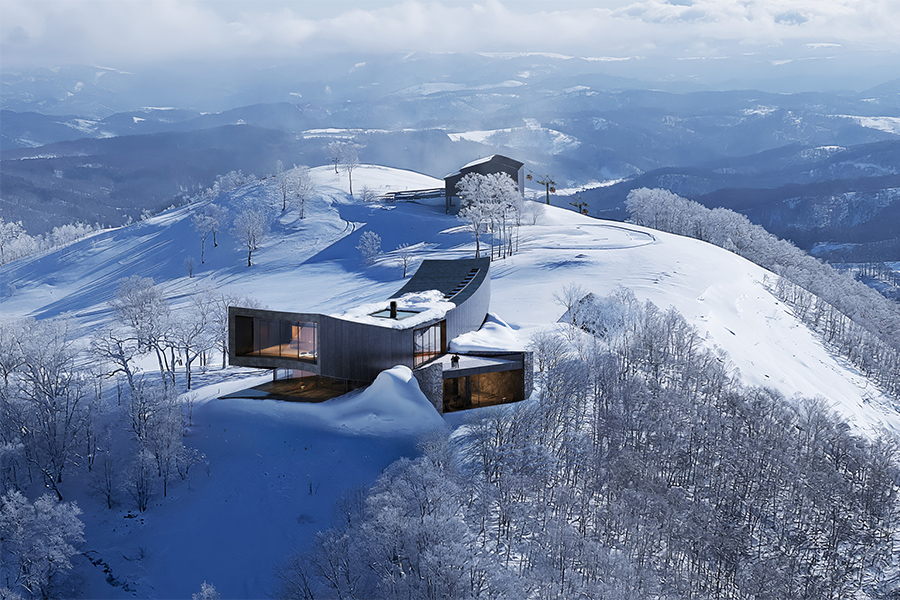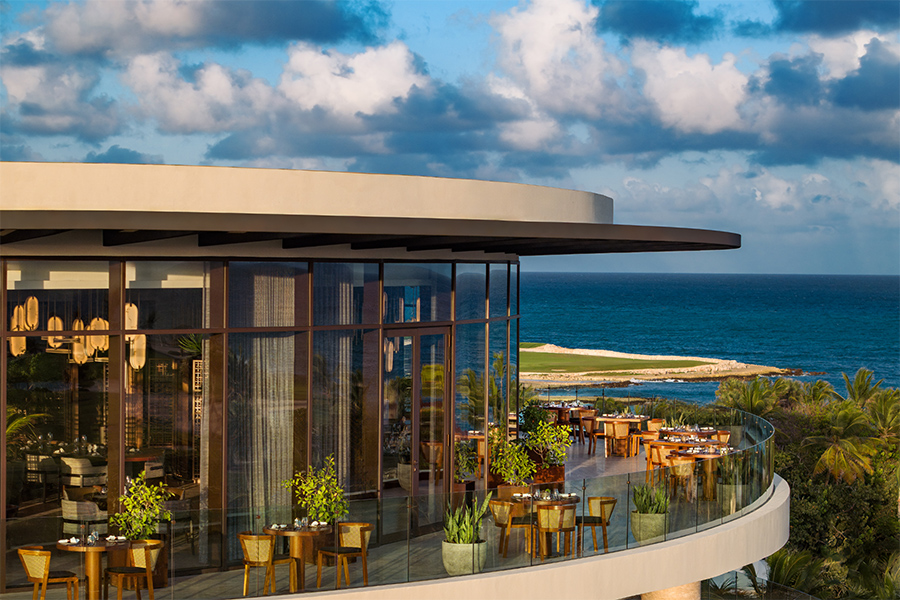With the Summer Olympics kicking off in Tokyo in July, and the Kengo Kuma & Associates–designed, nature-inspired stadium as the event’s showpiece, travel interest in Japan is continuing to ramp up. According to the Japan National Tourism Organization, more than 31 million overseas travelers visited the country in 2019. The hotel industry is benefitting from this boom: It’s estimated that during the period of January 2019 to July 2020, 19,000 new hotel rooms will be built. Among those coming online is the Kuma-designed, 205-room Tokyo EDITION Toranomon (the city will welcome a second EDITION property in the Ginza shopping district in 2021) and the 265-room mesm Tokyo, set for an April debut and designed by Wilson Associates’ Singapore studio.
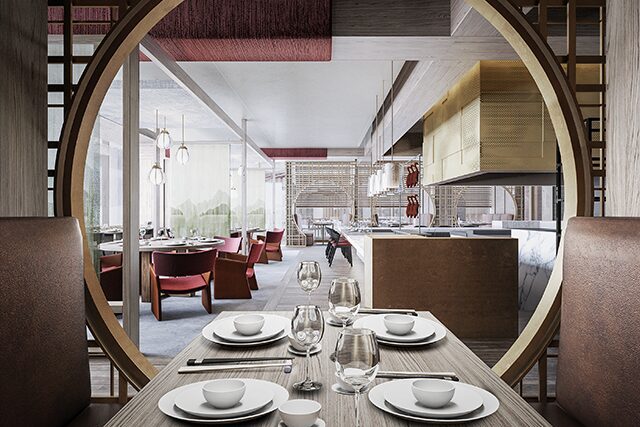
An airy atmosphere elevates China Kitchen restaurant at the Park Hyatt Niseko Hanazono
It’s not only the capital that’s a draw in Japan. Outside Tokyo, visitors are heading to more rural locations to relax. Japan-based Hoshino Resorts will unveil KAI Nagato in March with guestrooms that celebrate Samurai culture, while Hoshinoya Okinawa and Risonare Kohamajima, a lagoon-style pool and villa hangout on the Yaeyama Islands, are both set to open in April. Kyoto is also rivaling Tokyo for hotel supremacy. Following the Park Hyatt Kyoto, which arrived last fall with a design by Tony Chi, there is also the recently opened Park Hyatt Niseko Hanazono, a year-round mountain retreat by Melbourne firm BAR Studio.
Ace Hotel Kyoto

A guestroom at the Ace Hotel Kyoto, which melds Eastern and Western aesthetics
The Ace Hotel Group chose Kyoto for its first property in Japan—slated for a spring arrival in ShinPuhKan. Kuma, who will spearhead the design alongside frequent Ace collaborator Los Angeles–based Commune Design, will transform the landmark 1920s Kyoto Central Telephone Office into the new hotel.
“We fell in love with the city’s abundance of nature, historic architecture, and wealth of generational artisans,” says Kelly Sawdon, chief brand officer and partner at Ace Hotel Group, noting how Ace has been eager to make its mark in Japan since the brand’s inception. “The hotel was created in honest dialogue with the city’s past and future. We culled inspiration from Kyoto’s elevation of craft and the enduring appreciation between East and West aesthetic philosophies, bringing in artists from Japan and the U.S.”
Hotel the Mitsui Kyoto

The Library Room at the Hotel the Mitsui Kyoto, shown in a rendering, embraces local influences
For the Mitsui, a 161-room hotel that will make its debut in June opposite the 17th-century Nijō Castle, André Fu, founder of Hong Kong-based studio AFSO, was also drawn in by Kyoto’s legacy. “The arrival experience will be marked by an authentic 300-year-old timber gate that stood at the site originally. The poetic garden at the center courtyard shall serve as another design highlight,” he says. “Kyoto is a rare destination that remains authentic—it almost feels as if time has stood still there. The purity and texture of the streetscape and many key gardens instill a highly spiritual feeling.”
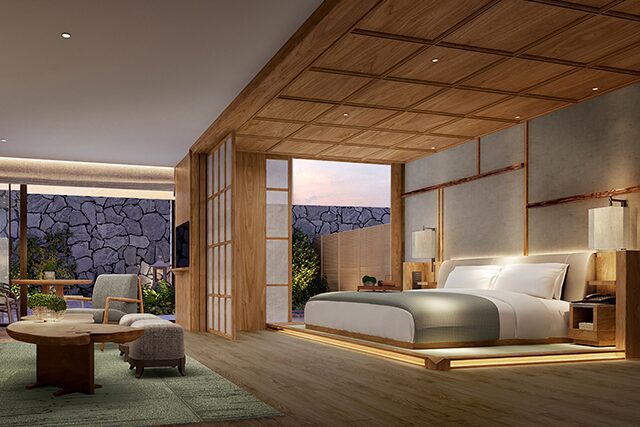
A suite opens up to an outdoor garden at the Hotel the Mitsui Kyoto, seen in a rendering
Aman Niseko

An exterior rendering of the Aman Niseko, set to be built on the slopes of Mt. Moiwa
Aman Kyoto opened last fall in a forest outside the city, and now the ryokan-like 30-room Aman Niseko is under development on the slopes at Mt. Moiwa. When it’s completed in 2023, the hotel (which, like the Kyoto property, is the handiwork of Singapore- and Perth, Australia-based Kerry Hill Architects) will feature handmade raku tiles and tatami mat-covered floors.
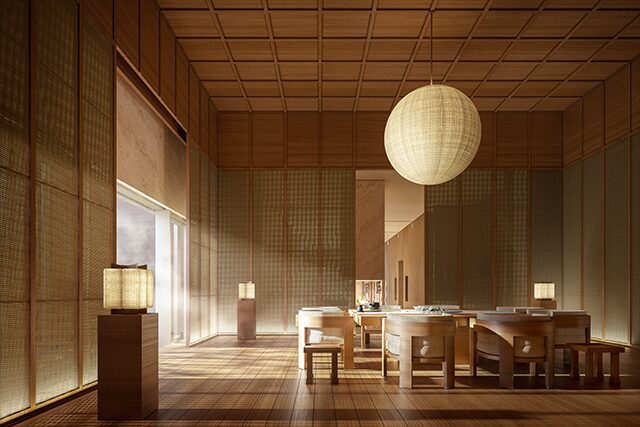
A rendering of the Aman Niseko showcases handmade raku tiles and tatami mat-covered floors
“Japan has seen a consistent increase of tourists in the last few years. With the Rugby World Cup in 2019 and other leading events, the whole country has opened up to international visitors,” says Roland Fasel, Aman’s chief operating officer. “The success of Aman Tokyo in 2014 and Amanemu in 2016 provided the ideal springboard from which to continue our journey through Japan.”
This article originally appeared in HD’s February 2020 issue.


